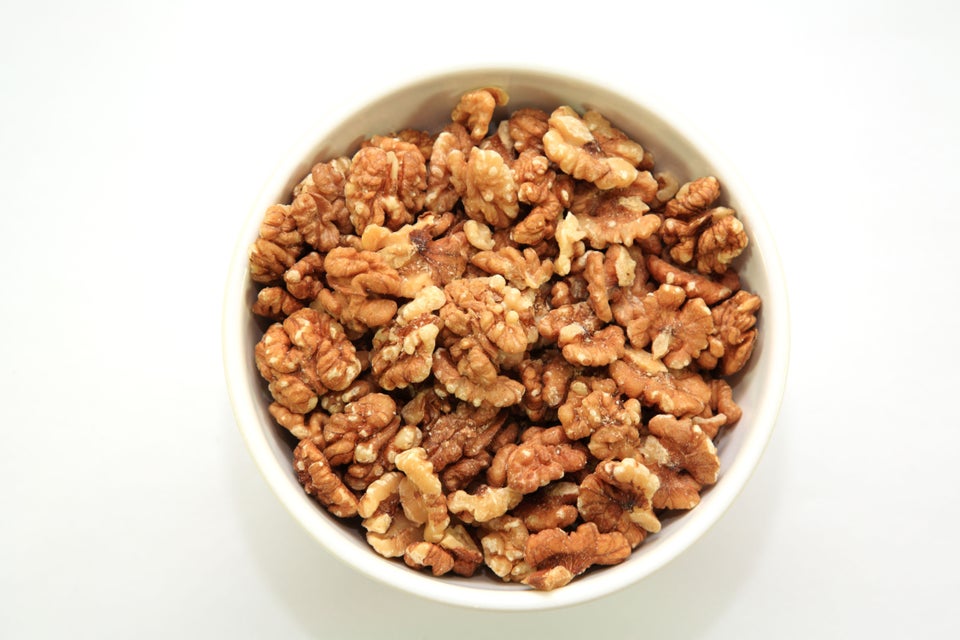It seems like every time you turn around, an exotic, new "miracle food" is on the must-eat list, upping the ante from coconut oil and chia seeds to acai berry and quinoa. We're not knocking their nutritional merit, but doctors and nutritionists want you to know that there is a huge crop of under-appreciated miracle foods at your fingertips—and you're probably already eating them.
Pickles
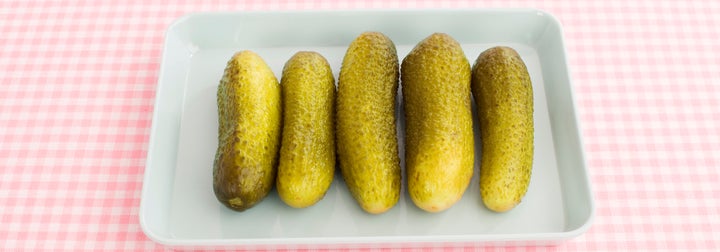
If you're hankering for a salty, crunchy snack, do yourself a favor and reach for a pickle. For one, naturally fermented pickles — which are the brined type found in the refrigerated section — are a "live culture food and a very low-calorie snack," says Drew Ramsey, an assistant clinical professor of psychiatry at Columbia University and author of Fifty Shades of Kale and the upcoming Eat Complete: The 21 Nutrients That Fuel Brainpower, Boost Weight Loss, and Transform Your Health. And because they are preserved by fermentation, rather than by cooking, pickled cucumbers retain their natural antioxidants, powerful allies in your body's fight against cell damage. "Pickles aid digestion, colonize the gut with good bacteria, and act as a powerful antioxidant to scavenge damaging free radicals," says Jennie Ann Freimann a former gynecologist and founder of the wellness blog Oobrootips.com, who recommends eating a pickle a day.
Pickles also may be a smart snack for people who get tongue-tied at parties. A 2015 study published in the journal Psychiatry Research found that participants who more often ate fermented foods experienced less social anxiety and shyness, especially if they were neurotic to begin with. Researchers believe fermented foods raise the levels of a brain chemical called GABA, which soothes the fear and anxiety response, according to an article on Smithsonianmag.com.
Mussels
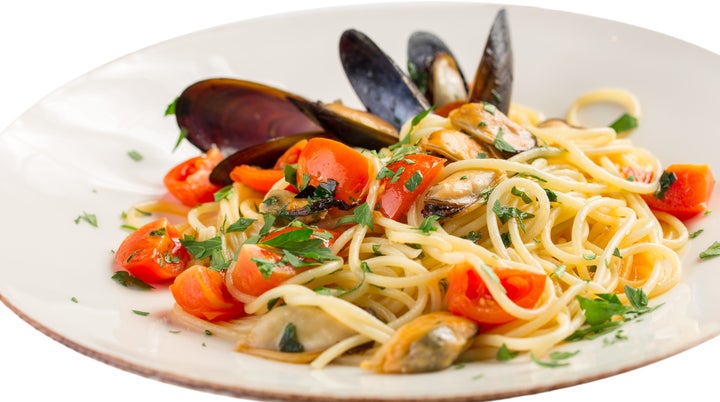
Speaking of nutrient powerhouses, mussels top most health professionals' lists of underappreciated foods. This humble mollusc contains high levels of DHA, an omega-3 fatty acid linked to lower risk of heart disease, stroke, and inflammation in the body. Mussels are also rich in energy-boosting B12, immune-system supporting zinc and selenium, and iron, which increases production of red blood cells and keeps your hair, skin and nails healthy, says Alissa Rumsey, a registered dietitian and spokesperson for the Academy of Nutrition and Dietetics. Plus, you can feel good about buying and eating mussels, since they are inexpensive, environmentally sustainable, and easy to farm.
"Mussels offer a great lesson for us," says Ramsey. "Along with nutrient density (five or six mussels gives you 300 percent of B12, 700mg DHA, 20g protein), they are also fun to eat and teach us to eat more slowly, more mindfully. They should be on the menu a few times a month."
Watercress

Break out the tea sandwiches (and somebody get kale a chair and a glass of water!) -- watercress is stepping into the nutritional limelight. While all leafy greens are well-known for being nutrient-rich cancer-fighters, tender watercress earned the No. 1 spot in a list of 41 "powerhouse fruits and vegetables," published in 2014 by the Centers for Disease Control's journal Preventing Chronic Disease. This salad green is very low in calories, contains ample amounts of vitamins A and C, and is an excellent source of vitamin K, providing 79 percent of your daily recommended intake of this nutrient that's been shown to strengthen your bones, says Rumsey. Furthermore, "the flavonoids in watercress help protect against damage from free radicals and support good vision," she says.
"Since it is so tender, watercress cooks up quickly and adds a mild peppery taste to your dish," says Rumsey. "Try tossing a handful into your smoothie, add it to an omelet or egg scramble, or put in on a sandwich or in a wrap."
Dark chocolate
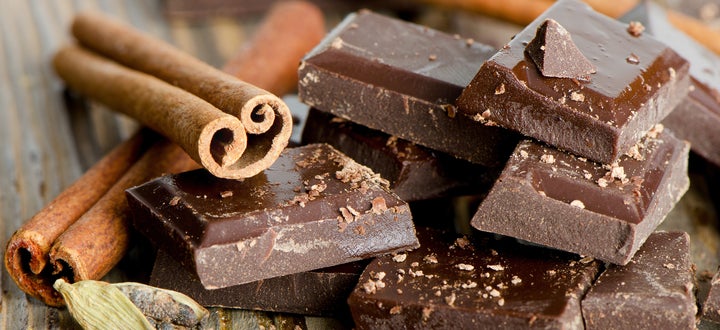
We hate to gild the lily, but dark chocolate has proven itself worthy of miracle-food status yet again. In addition to lowering your risk of cardiovascular disease, protecting you from free radical cell damage, improving your blood flow, and preventing the buildup of arterial plaque, you can add improves brain function to chocolate's list of health benefits. A 2016 study of 1,000 people showed a positive correlation between habitual chocolate eating and heightened cognitive performance, including remembering phone numbers, multitasking, and performing abstract reasoning. "Dark chocolate is a wonderful stimulant," says Ramsey, who cautions against eating it late at night. "There's very clear science that it's the only food to acutely improve mood and focus, plus the flavanols in chocolate have been shown to reverse age-related memory decline.
Unfortunately, that slice of chocolate cake isn't going to give you the same benefits as a piece of dark chocolate with 70-85 percent cocoa content, says Ramsey, who believes 2 to 3 ounces of dark chocolate a day could be deemed "medically advisable." "If you're eating dark chocolate and nuts for dessert, that's really super healthy for you—we almost shouldn't call that dessert."
Pumpkin Seeds
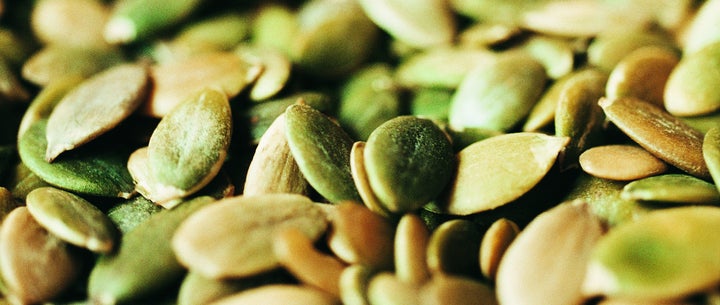
You may already know that eating a handful of nuts a day can help you live longer, but did you know that regularly eating certain seeds can help make that long life more pleasurable? "Pumpkin seeds are one of top dietary sources of tryptophan, the basic ingredient the body needs to make serotonin and dopamine," says Ramsey. "Those two chemicals are most important for mood, sharp thinking, and experiencing joy and pleasure."
Pumpkin seeds are also a rich source of manganese, zinc, vitamin E, antioxidants, and healthy fats. What sets these gourd seeds apart from other nutrient-dense foods is their accessibility, says Ramsey. You can find pumpkin seeds, a.k.a. pepitas, in almost every grocery store, and their flavor is mellow enough to play well with other foods. "They're an inexpensive, simple way to add more minerals, monounsaturated fat, and filling fiber to your diet—eat them whenever you can," says Dr. Ramsey, who suggests sprinkling raw pumpkin seeds by the quarter cup into smoothies, salads, and stews, or just eating them by the handful as a snack. Why raw? High heat can damage the phytonutrients and antioxidants, he warns. If you prefer roasted seeds, toast them yourself, so you can control the heat.
Read more from Grandparents.com:
5 Easy Ways to Decrease Your Portion Sizes

